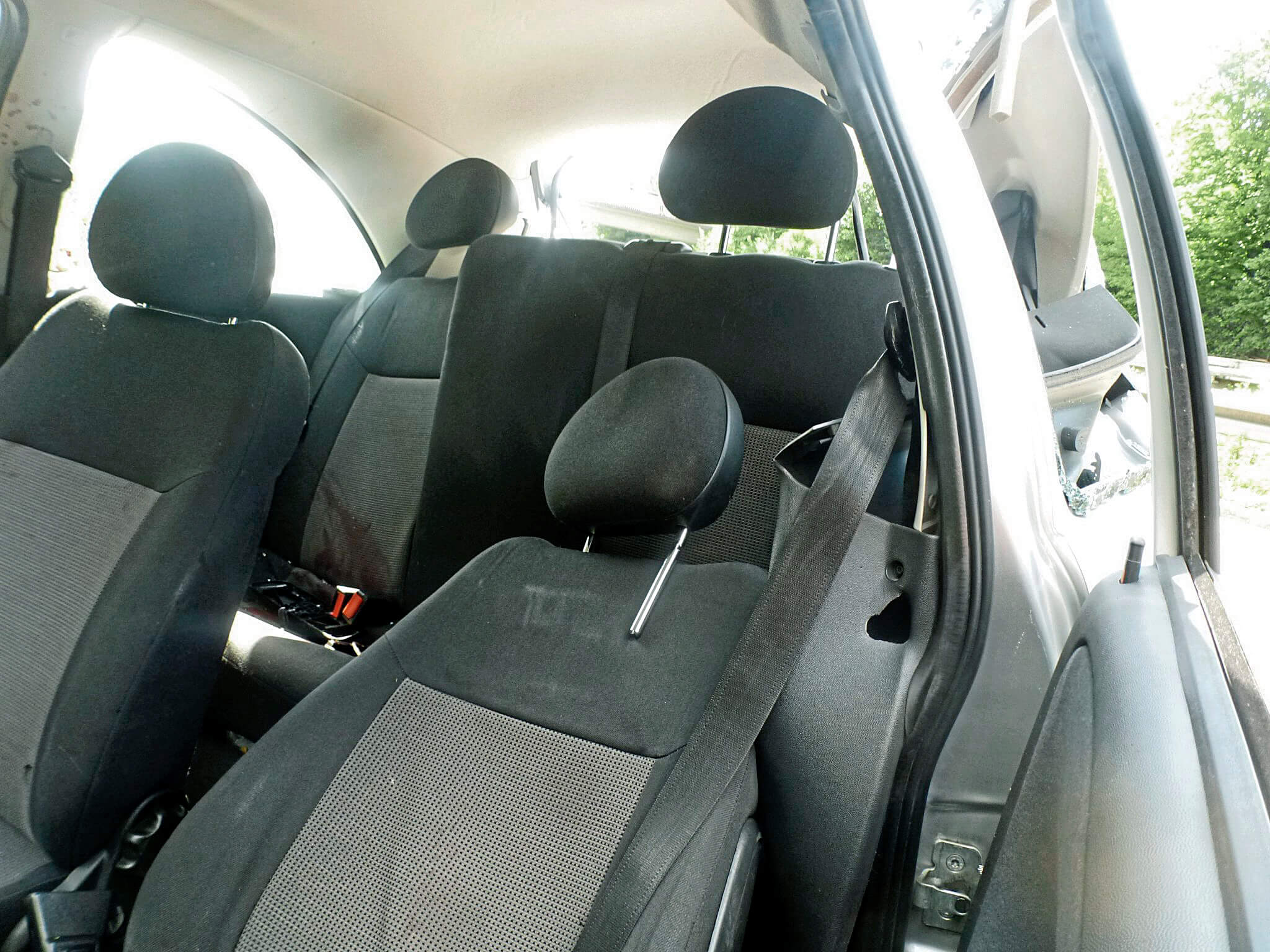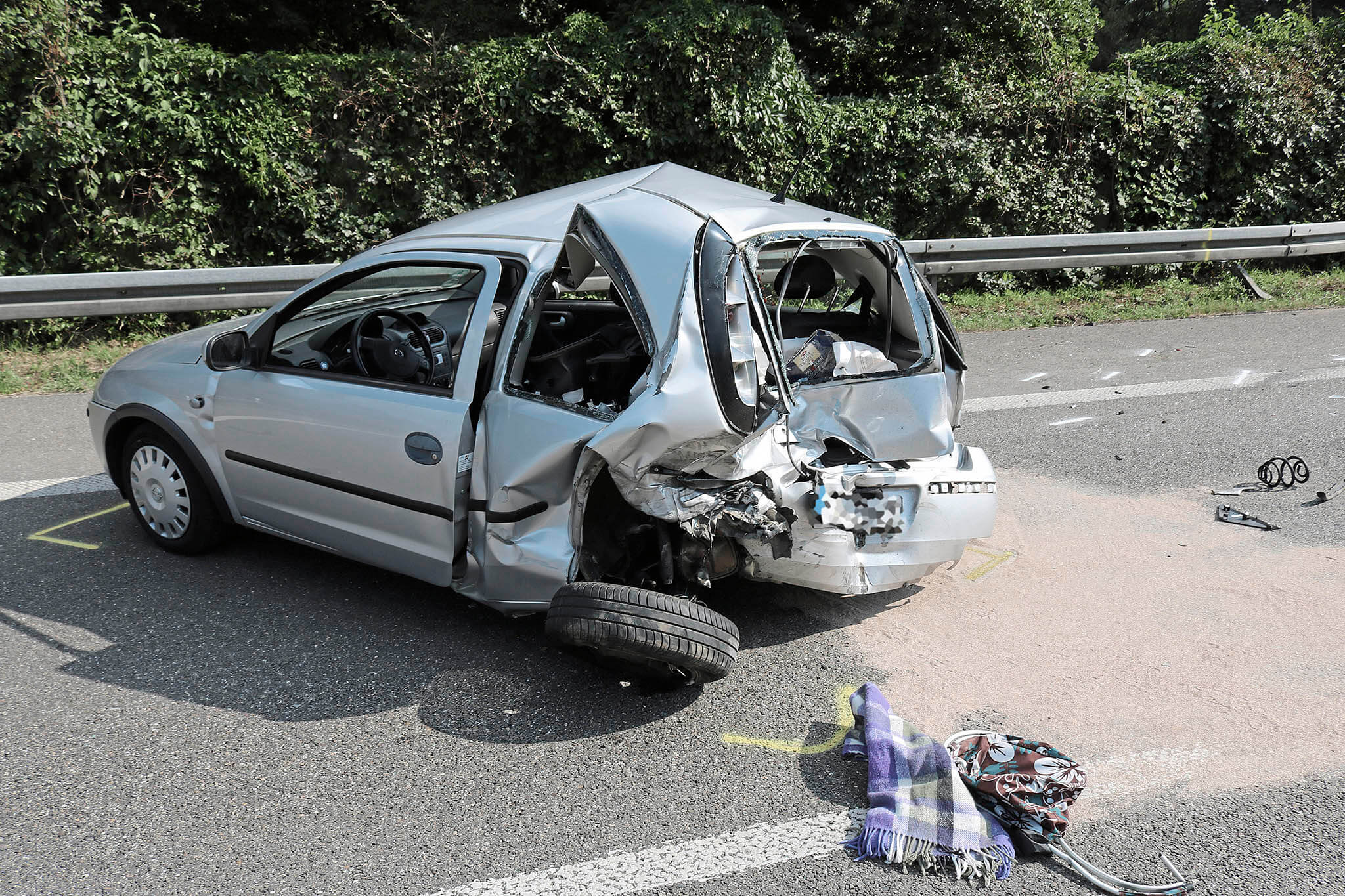Van drives into the back of car
Health problems
Sequence of events:
On a federal highway structured like a freeway, a 72-year-old car driver was driving very slowly in the right-hand lane in daylight and good weather conditions. The driver of the van behind her noticed this too late, and drove into the tail of the car at around 100 km/h with almost no braking.
On a federal highway structured like a freeway, a 72-year-old car driver was driving very slowly in the right-hand lane in daylight and good weather conditions. The driver of the van behind her noticed this too late, and drove into the tail of the car at around 100 km/h with almost no braking.
Persons involved in the accident:
Car driver and van driver
Car driver and van driver
Consequences/injuries:
The car driver suffered fatal injuries; the van driver was severely injured.
The car driver suffered fatal injuries; the van driver was severely injured.
Cause/problem:
The car driver was driving in the right-hand lane of a federal highway, where the speed limit was 100 km/h. Even though there was a low volume of traffic, she had been driving very slowly over a long distance (between 0 and 18 km/h at the time of the collision). During the course of the accident reconstruction, the experts were able to rule out weather, traffic and technical defects in the vehicle as reasons why the car was being driven so slowly. It is presumed that the car driver was driving slowly for reasons relating to health problems on her part. It was not possible to determine whether the van driver had been distracted or if there was some other reason why he did not react to the car, which he should have been able to see from far away and in plenty of time.
The car driver was driving in the right-hand lane of a federal highway, where the speed limit was 100 km/h. Even though there was a low volume of traffic, she had been driving very slowly over a long distance (between 0 and 18 km/h at the time of the collision). During the course of the accident reconstruction, the experts were able to rule out weather, traffic and technical defects in the vehicle as reasons why the car was being driven so slowly. It is presumed that the car driver was driving slowly for reasons relating to health problems on her part. It was not possible to determine whether the van driver had been distracted or if there was some other reason why he did not react to the car, which he should have been able to see from far away and in plenty of time.
Avoidance measures, mitigation of consequences/ strategy for road safety measures:
The accident would have been avoidable for the van driver if he had been paying the requisite amount of attention while using the road. An automated emergency braking system that is effective at the relevant speeds would have mitigated the consequences of the accident; an advance collision warning system may have been able to prevent the accident entirely.
The accident would have been avoidable for the van driver if he had been paying the requisite amount of attention while using the road. An automated emergency braking system that is effective at the relevant speeds would have mitigated the consequences of the accident; an advance collision warning system may have been able to prevent the accident entirely.
The accident would have been avoidable for the senior citizen if she had either been driving at a speed suited to the prevailing visibility and road conditions or had steered her vehicle onto the hard shoulder. Regular health checkups, an honest appraisal of one’s own abilities, and listening to advice from family and friends regarding one’s ability to drive safely can help with such situations.




